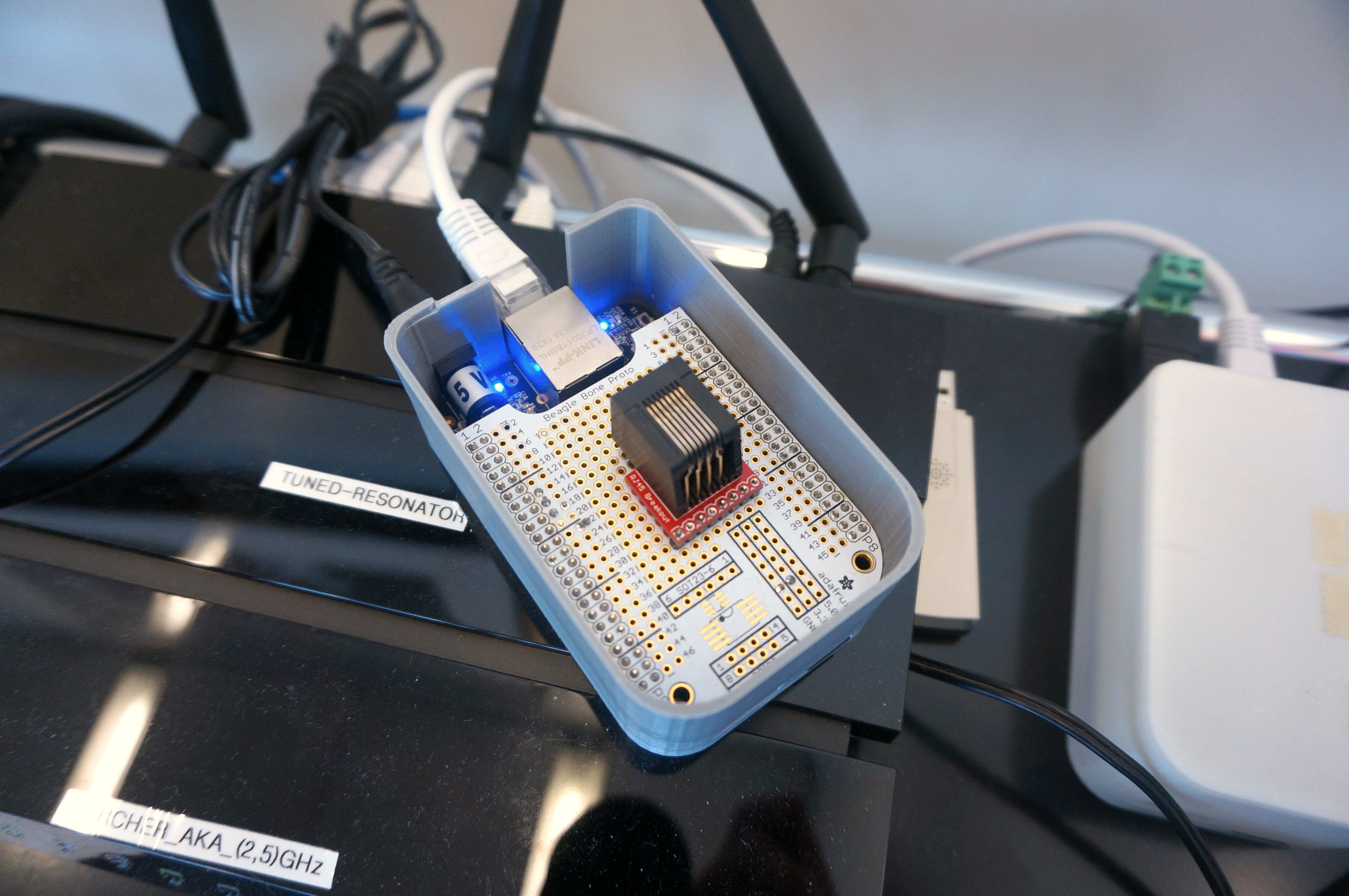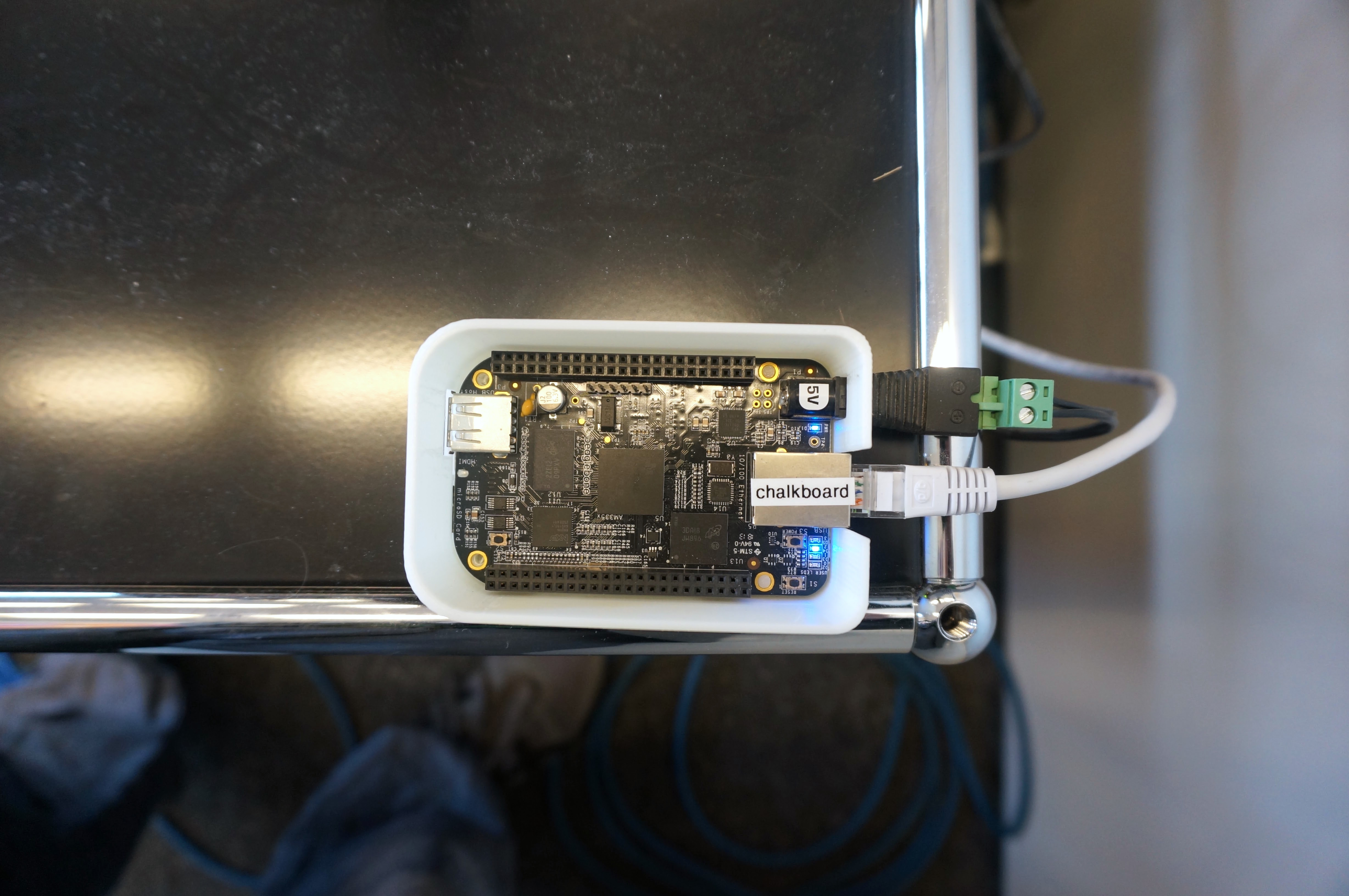TUNED RESONATOR is a large-scale experiment in local networks – that is, networks that are not connected to the internet at large; networks whose spatial boundaries coincide with their electromagnetic ones.
I’ve been thinking a lot about the spatiality of networks these days. For example, the space defined by the RF propagation range of your home wifi router. This subnet, circumscribed in space: is it a public place?
In physical space, space on the order of your wifi’s range, there are a number of publics, right? (Maybe a better way to say this is that physical space experiences different densities of public / it is striated along lines of visibility/observability) There’s what can be heard in a café; there’s who can be seen in a café; there’s who can hear your whisper; there’s who can see your signs. The space supports encryption, for we can talk in code, and it supports broadcast, as I can shout a message. A real rich space, for sure.
I’m pretty used to the internet-at-large as a machine adept at (indeed, optimized for) obliterating distances and normalizing address; with this exaggerated-or-skewed-or-transformed perspective comes a flatter notion of a more singular public: of how far an utterance may travel, or from what remove an observation might be made. To secret oneself, to shout: modulations of an agent and powerful citizen.
To institute in a network the phenomena of a locale. To create-or-foster a smaller public, confined to a space and separate from the internet-at-large. To experiment with combinations of Hertzian and spatial forms of presence-or-community. A network-aware sense of place. Here goes tuned-resonator!
I think of this system (which is, as I will explain-or-show, the network itself and a set of subspecies-or-barnacles-or-services that live thereon) as a tuned-resonator because it is a connective structure designed to resonate on certain bands, at certain nodes - and these nodes are deeply linked to the behaviors of the people in their range (that range being, able to reach the network itself)
So what is it? As it is so far, tuned-resonator is a customized router, several small computers I’ve been calling “barnacles” that each execute a specific, independent task, and any number of regular client computers and smartphones who can see beacon-like transmissions over BLE or mDNS (an opensource app by Google called physical-web is a good way to see what broadcasts like these will look like).





Here are the three species in more detail:
The router itself is a customized openWRT install, chosen because it makes its mechanism flexible; it also allows sophisticated access control and routing, so that if sub-networks are needed or wanted, they may be created easily. For example, early versions of tuned-resonator had an iptables routing that refracted port 80 traffic to a specific barnacle for filtering and abstraction.
Future or other tuned-resonators could conceivably host a captive portal that introduces new people to the tuned-resonator concept/environment. I am intentionally omitting any text-based introductions to the environment for now: for now, this is and should be a person’s job, much like introducing a new colleague to the work culture at your job or figuring out from others what the wifi password is at a bar.
The barnacles are computers (mostly Beaglebones Black, but some lower-level M0) that exist on the network in order to make a service available - this is just like the way printers and copiers might make themselves visible to your computer on the network (in fact, mDNS was originally intended for this use).
In the barnacles’ case, however, the processes made available are of a different character than that of “printer” or “scanner.” Barnacles exist to augment their users’ situational awareness, to enrich the physical space with semantically-rich signals from the network domain. For example, one barnacle analyzes traffic on the subnet and performs the Curriculum function, serving out a stream of fragments from the curriculum.local address.
(an aside:) Barnacles allow me to work within a conceptual development constraint I am toying with of late: the quality of “all it does.” I try to formulate a full and complete statement of what a barnacle does in one unambiguous sentence, like in the language of a geometrical proof, or the description of a conceptual performance. This constraint does several things: it forces me to reduce and refine my task to its essentials; it makes what the barnacle does unambiguous and easy to communicate; and it resists the kind of infantalizing metaphorization that got us “the cloud.”
The last component of the environment is, obviously, you. I’m using Google’s open-source Physical Web project to broadcast the availability of each barnacle; Physical Web beacons comprise a superset of mDNS, BLE, and SSDP protocols, provide a consistent and flexible means of surfacing barnacle metadata (name, description, small data payload) at the OS level of a smartphone.
So I’m thinking of these barnacles not as sensors, but observers. The difference is, to me, the encapsulation of sensing and abstraction: an observer understands its context and formulates an appropriate address, possibly at the expense of exhaustiveness or accuracy. These are signals for situational awareness; to refine and enrich a person’s sense of locale.




